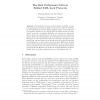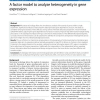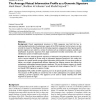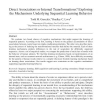652 search results - page 116 / 131 » Structural Patterns for Soundness of Business Process Models |
DEXA
2009
Springer
15 years 5 months ago
2009
Springer
Abstract. Fine-grained lock protocols should allow for highly concurrent transaction processing on XML document trees, which is addressed by the taDOM lock protocol family enabling...
BMCBI
2010
14 years 10 months ago
2010
Background: Microarray technology allows the simultaneous analysis of thousands of genes within a single experiment. Significance analyses of transcriptomic data ignore the gene d...
BMCBI
2008
14 years 10 months ago
2008
Background: Occult organizational structures in DNA sequences may hold the key to understanding functional and evolutionary aspects of the DNA molecule. Such structures can also p...
IRREGULAR
1997
Springer
15 years 2 months ago
1997
Springer
ing with shared data abstractions Simon Dobson1 and Don Goodeve2 1 Well-Founded Systems Unit, CLRC Rutherford Appleton Laboratory, UK 2 School of Computer Studies, University of Le...
77
Voted
COGSCI
2010
14 years 10 months ago
2010
We evaluate two broad classes of cognitive mechanisms that might support the learning of sequential patterns. According to the first, learning is based on the gradual accumulation...




